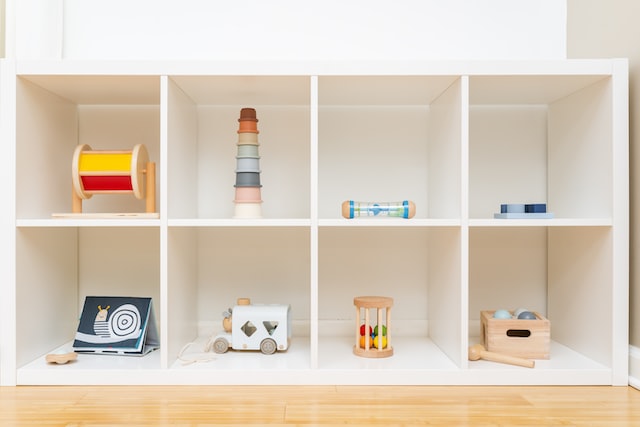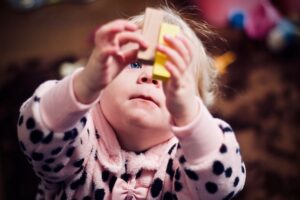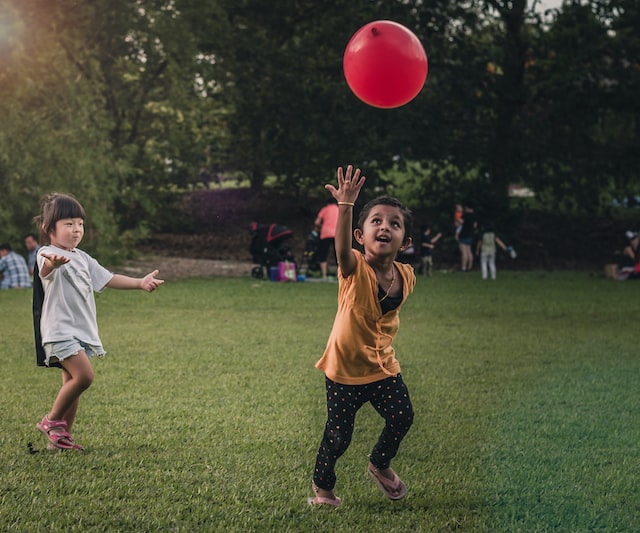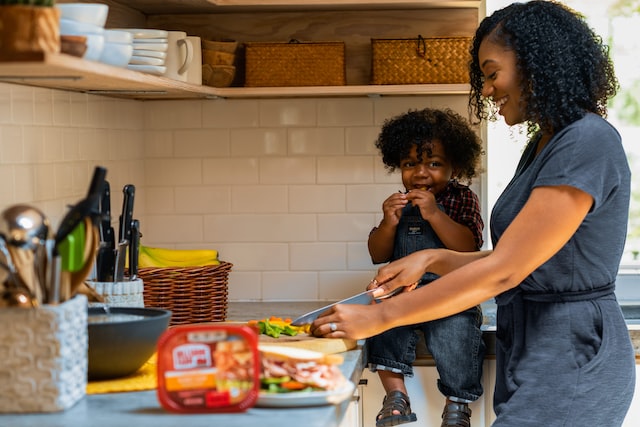In previous articles, we discuss the importance of interacting positively with children, trusting them and learning to communicate effectively. When following the Montessori method at home, one way of expressing our trust in them is to create a physical environment that allows them to explore, be independent and practice all the skills they are so enthusiastic to master. Montessori uses the term “prepared environment” to refer to a space carefully adapted and modified to meet the needs not only of adults but also of children. Why is it so important?
How children learn
The first six years of a child’s life are critical to their development. In these crucial years that pass with incredible speed, children build the core of their personality, learn to manage emotions, the brain reaches the peak of work, and they begin to confront the world and interpret it. Everything they learn will remain unconsciously anchored to their being for life. Amazingly, the process unfplds spontaneously, thanks to the incredible capacity of the human brain to absorb information. Everything the environment offers them, children absorb, for better or for worse. And since learning is driven by direct interaction with the environment, it is easy to understand how the physical environment also plays its part.
where to start from
Where should you start if you wish to follow the Montessori method at home and make some changes to the environment? In this article, I will not talk about activities considered and sold as “Montessori”, because I believe they are not essential. Of course, Maria Montessori created an educational apparatus for the school that is incredible but it is mainly designed for schools. Instead, I would like to focus on all those small changes that can be made to our home more suitable for children and think about the essential needs of these early years. The good news is that the investment required to adapt the spaces is very minimal. In the long run, it will help you save money as this is a rather minimalist approach.

Observing
Even before making any changes, take some time to observe. Start from the physical spaces, kneel and look at the environment from the height of the children. What can they see, reach and touch? Are there any items that should not be within their reach? Is the environment welcoming? Safe? Begin by removing any objects that you want them to touch, keeping in mind that children are naturally curious and are on a mission to discover the world. Finally, take some time to observe what the children are doing. What is their favourite activity? What makes them angry and what are they passionate about it? Keep these questions in mind for the next section.
less is more!
The fundamental motto to keep in mind following the Montessori method at home is less is more! Children’s bedrooms nowadays, if only in the West of the world, are overflowing with games for which children lose interest quickly, on which they barely linger. The chaos they create is unmanageable as is their mood. The excess of stimuli is never positive, it distracts and makes you hyperactive. On the contrary, I recommend that you use what you have discovered by observing your children to carefully select a few activities to put on display and available. The others can be organized in boxes, ready to be made available again when their interest changes. Trust me, having less will foster children’s natural ability to concentrate and make them calmer. Not to mention the benefit of having less to tidy up at the end of the day.
one room at a time
Without rush, start with a room and make small changes. Perpahs a corner dedicated to children or a few adjustments to involve them in everyday life. If you are passionate about social media, do not be swayed by the thousands of perfect activities or bedrooms on Pinterest or Instagram. In my personal experience, the most beautiful shelf can get messed up in a few minutes and half of the material fall to the floor. The reality is always more complex than what is portrayed by social media and the children‘s learning process is more complicated. Every home, family and child are unique, there’s no recipe suitable for everyone. The aim is not to revolutionize your home and life overnight. Rather, it is about keeping in mind what your ultimate goal is and gradually making a few small changes day after day that will allow you to better support the children.
Find out how to change the environment to follow the Montessori method at home with my book: “Montessori per genitori di bambini da 3 a 6 anni”




[…] Even though it was used before she published her books, the term “gentle discipline” is usually attributed to Sarah Ockwell-Smith, well-known author and parenting expert. While Maria Montessori never used this term, the main principles are very much in line with the Montessori philosophy. To some extent, they complement it, making it a perfect tool for parents who want to follow the Montessori discipline at home. The four principles of gentle parenting are empathy, respect, understanding and boundaries, words that I use several times in my book. Without a doubt, they are pillars for creating a peaceful environment at home. Let’s reflect on how they can promote the Montessori discipline at home. […]